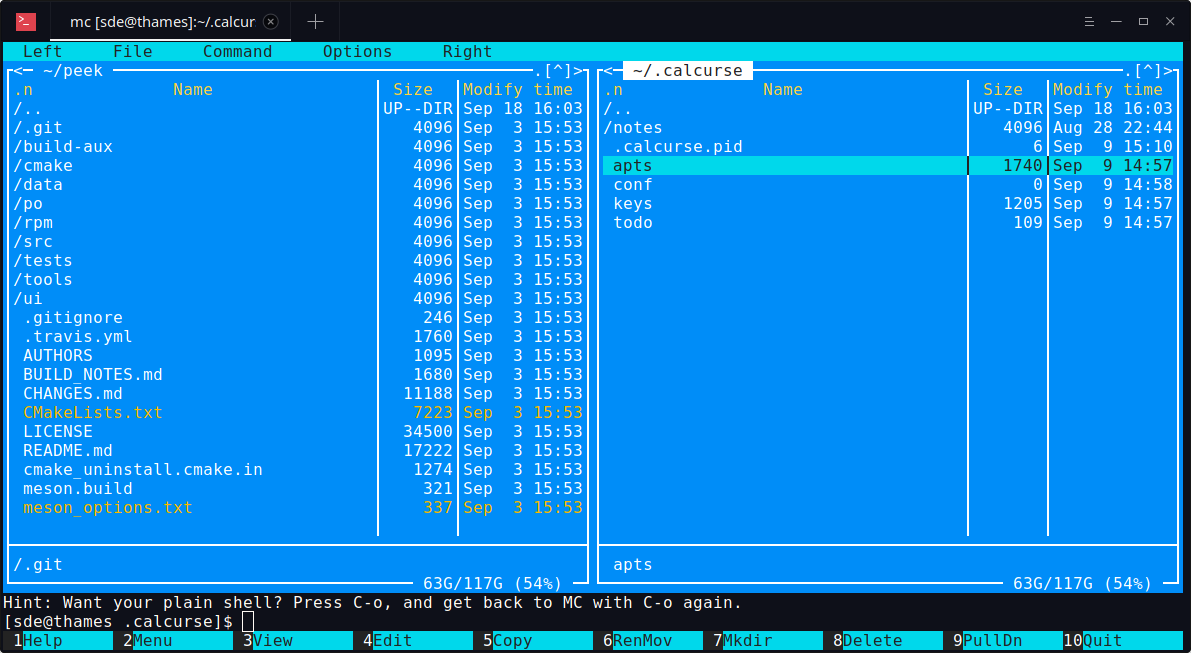
Now, you can just source it and use it as described in the link above. So, to use that script, add a line after the second line, so it looks like this: MC_USER=`id | sed 's/*(// s/).*//'` By default it is set to false which causes this behavior.

This is something, that isn’t taken into account when it comes to mc-wrapper.sh. 1 Answer Sorted by: 2 You need to edit /.config/mc/ini config file and look for onlyleadingplusminus entry. So in my case, mc’s temporary folder ends in „o“. The emphasis here is very long folder name.īecause when you got a long username (like oeger for example), 64 bits tend to get really short: $ echo "$oeger" | wc -c Basically, it’s just a very long folder name with crypting (random) characters in it. James Reynolds did a very nice investigation about that directory tree. Mac OS (since 10.5 that is) holds the temporary files in its /var/folders-directory tree. And mc designs it temporary directory by using that temporary directory, the prefix „mc-“ and then the currently logged in user. Where is a temporary directory located on a Linux operating system? Yes, /tmp. That’s the character buffer the temporary directory will be squeezed into. Its a feature rich full-screen text mode program that allows you to copy, move and delete files. You might have noticed the variable „buffer“ with a size of 64. GNU Midnight Commander is a visual file manager application. In line 916, the function „mc_tmpdir“ is defined: mc_tmpdir (void) Specifically, the file lib/vfs/interface.c.


(I’ve installed mc using the wonderful Homebrew) If you like the nice curses based „Finder“ from the unix world called „ Midnight commander“ and would like to use the supplied mc-wrapper.sh-Script, that changes the current working directory to mc’s last selected one, you’re a bit lost on the Mac platform, because it doesn’t work.


 0 kommentar(er)
0 kommentar(er)
